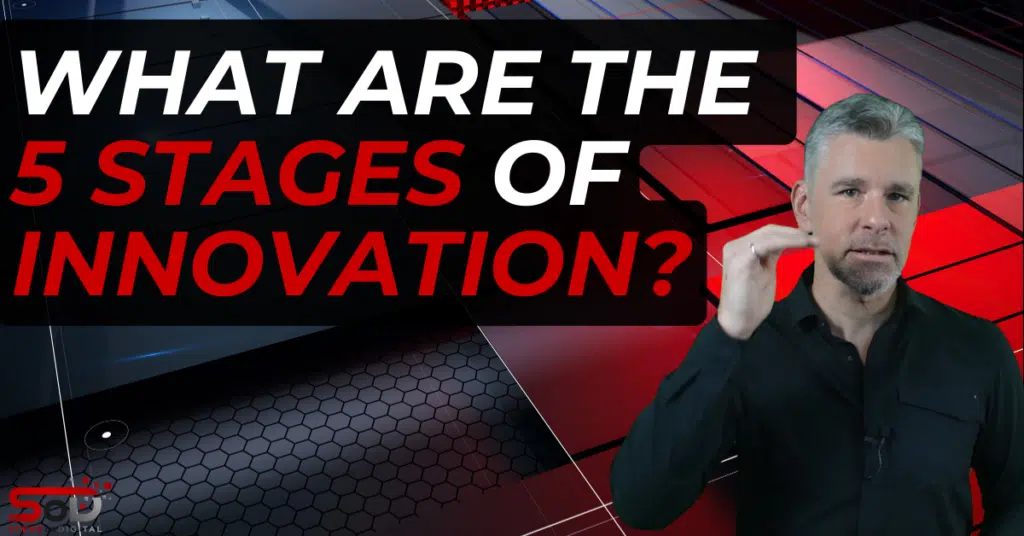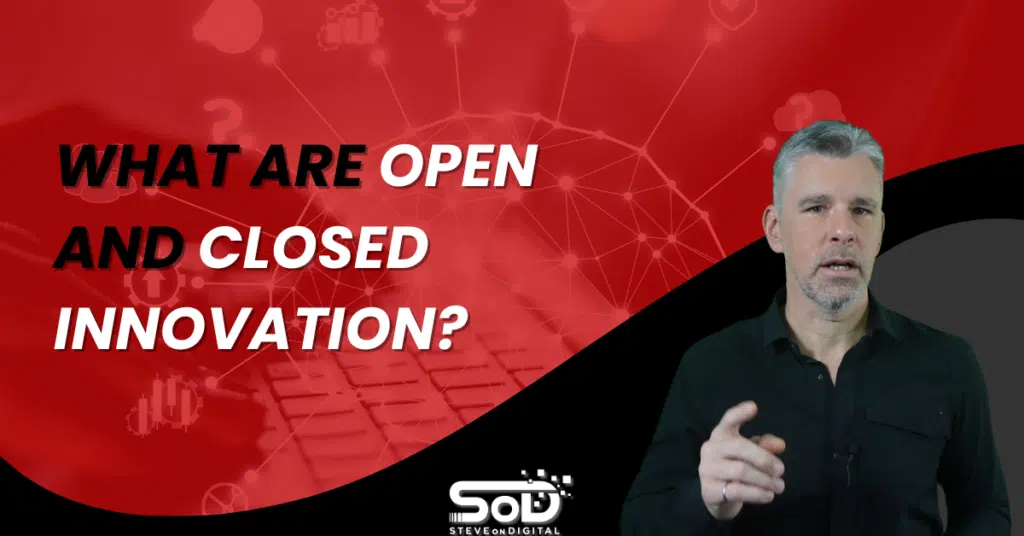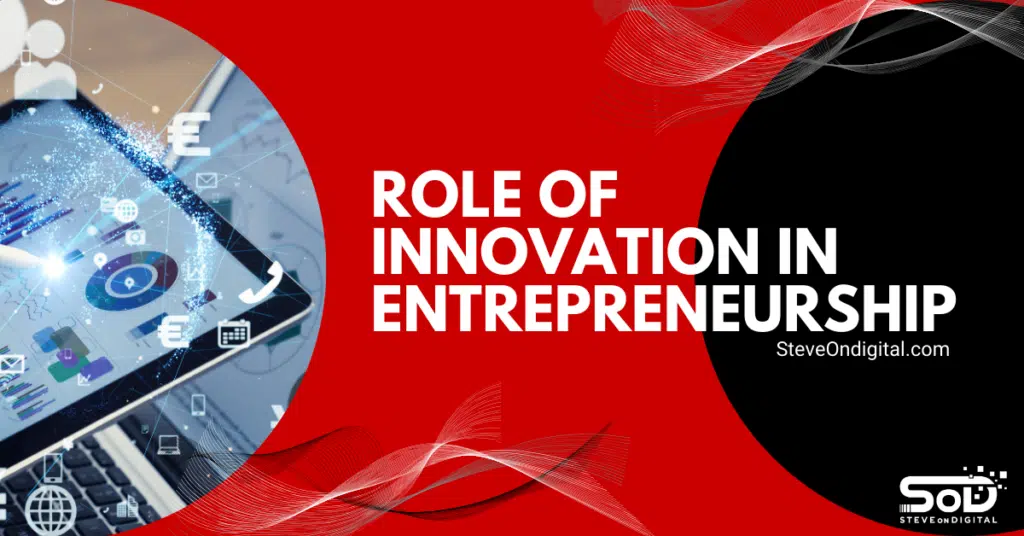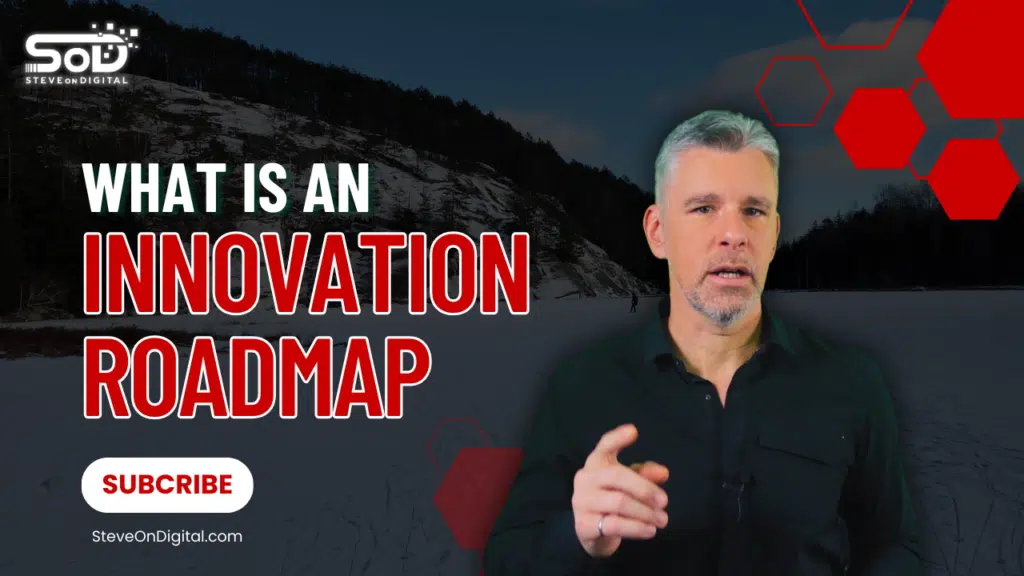When should a small business hire a CFO? – The Right Time

A small business should consider hiring a Chief Financial Officer (CFO) when it reaches a point where financial complexities and strategic planning demand expertise beyond basic accounting. This often coincides with rapid growth, expansion into new markets, increased regulatory requirements, or when preparing for significant financial events like fundraising, mergers, or acquisitions. Essentially, if the business owner finds themselves spending too much time on financial management rather than focusing on core business strategies, or if the current financial team is overwhelmed, it’s time to hire a CFO. The right CFO brings financial expertise, strategic insight, and leadership to navigate complex financial landscapes, ensuring the business not only survives but thrives in its competitive environment. Understanding The Role Of A CFO At the heart of financial leadership within a company lies the Chief Financial Officer (CFO). The CFO’s role is pivotal in not only ensuring the accuracy of financial reports and compliance with regulatory requirements but also in steering the company toward its financial objectives through strategic financial planning and analysis. Definition And Key Responsibilities Definition Of CFO: Key Responsibilities: Difference Between CFO, COO With Financial Acumen, Controller, And Bookkeeper The distinction between a CFO and other financial roles such as a COO with financial acumen, a Controller, or a Bookkeeper, lies in the scope and strategic nature of their responsibilities. While a COO might possess financial knowledge, their focus is more on the operational aspects of the business. A Controller oversees accounting and financial reporting, ensuring accuracy and compliance, whereas a Bookkeeper is responsible for recording financial transactions, maintaining financial records, and executing day-to-day financial tasks. Unlike these roles, a CFO brings financial expertise and strategic oversight, guiding the company through complex financial landscapes, identifying growth opportunities, and mitigating financial risks. They play a crucial role in strategic planning, investment decisions, and in shaping the company’s financial future. CFO Responsibilities And Comparison With Other Financial Roles Role Financial Planning Risk Management Strategic Decision-Making Accounting & Reporting Daily Financial Tasks CFO ✔️ ✔️ ✔️ ✔️ Occasionally COO with Financial Acumen Sometimes Sometimes Sometimes No No Controller ✔️ ✔️ No ✔️ No Bookkeeper No No No ✔️ ✔️ The Evolutionary Path Of SME Financial Needs The Hierarchy Of Financial Needs: From Transacting To Strategic Partnering Just as Maslow’s hierarchy of needs outlines the progression of human needs, SMEs experience an evolutionary path in their financial needs, from basic transaction processing to sophisticated strategic partnering. Initially, small businesses focus on fundamental financial transactions and record-keeping (accounts payable, accounts receivable, and maintaining financial records). As they grow, their financial needs become more complex, requiring advanced financial analysis, strategic financial decisions, and comprehensive financial planning to ensure sustainable growth and financial health. Identifying Where Your Business Stands On The Financial Hierarchy For small business owners, understanding where your business currently stands on this hierarchy is crucial. It involves assessing your current financial management practices, the complexity of your financial data, and your strategic planning capabilities. This evaluation helps in determining the right time to hire a CFO or enhance your finance team’s capabilities to address more sophisticated financial needs. The Illusion Of Fintech As A Complete Solution In today’s digital age, fintech solutions offer small businesses a range of tools for managing their financial operations. However, while these technologies can streamline processes and improve efficiency, they cannot replace the strategic insight and expertise a CFO brings to a business. Fintech can support day-to-day operations and financial reporting, but strategic financial decisions, risk assessment, and long-term financial planning require the human insight, experience, and expertise of a financial leader. When To Consider Hiring A CFO For Your Small Business Navigating the financial complexities of a small business can be a daunting task. As your business evolves, so do its financial needs, requiring more sophisticated management and strategic planning. Recognizing the signs that your small business is ready for a Chief Financial Officer (CFO) can be the catalyst for sustainable growth and financial stability. Signs And Triggers For SMEs Signs Your SME Needs A CFO Sign/Trigger Description Rapid Growth and Scaling Challenges Financial complexities increase, necessitating strategic planning and analysis. Complex Financial Decisions and Economic Uncertainty Strategic financial planning becomes crucial to navigate uncertainties. Internal Growth, Partnerships, Subsidiaries, and Acquisitions Expansion requires sophisticated financial analysis and planning. Fundraising, Capital Needs, and Investment Strategies Expertise needed in managing capital and developing investment strategies. Early vs. Timely vs. Too Late Hiring Recognize when financial management complexity exceeds current capabilities. Alternatives To A Traditional CFO For small businesses not yet ready to hire a full-time CFO, there are alternatives: CFO Hiring Options For Small Businesses Option Scope of Work Benefits Best Suited For Part-Time Accountant/Bookkeeper Basic financial management and reporting. Cost-effective, covers fundamental needs. Early-stage businesses with straightforward financial needs. Temp or Advisor CFO Strategic financial advice on a temporary basis. Strategic insight without long-term commitment. Businesses facing specific strategic challenges or transitions. Controller/Head Of Finance Manages accounting and financial reporting. Step towards strategic financial management. Growing businesses needing more than basic financial oversight. Finance Firm Partnerships Outsourced financial management. Access to comprehensive financial services. Businesses looking for expertise without hiring in-house. Fractional CFO CFO-level expertise on a part-time basis. Flexible, cost-effective strategic management. SMEs needing strategic financial insight but not ready for a full-time CFO. Determining The Right Time For Your SME What To Look For In A CFO As the financial backbone of a small to medium-sized enterprise (SME), the role of a Chief Financial Officer (CFO) goes beyond just crunching numbers. It’s about steering the company towards financial success and stability. From my journey as a business owner and entrepreneur, I’ve gleaned insights into what makes a CFO invaluable and how to ensure you’re making the right addition to your team. Essential Capabilities And Expertise For An SME CFO A CFO’s value lies in their depth of financial expertise and strategic thinking. Here are some critical areas to focus on: Questions To Ask When Building A Finance Function When Interviewing Candidates, Consider Asking: The Balance Between
10 Financial Management Tips For Small Businesses – SteveOnDigital

In the dynamic world of entrepreneurship, mastering financial management is not just beneficial for small business owners—it’s essential. The difference between thriving and merely surviving often lies in how well a business manages its finances. Today, I want to delve into the importance of financial management for small businesses and give you a sneak peek into the 10 financial management tips that are pivotal for success. The significance of adept financial management in the realm of small businesses cannot be overstated. With over 30.7 million small businesses fueling the U.S. economy, contributing to 44% of economic activity, and accounting for 1.5 million jobs annually, the impact of these enterprises is profound. Yet, amidst this vast landscape of innovation and employment, challenges persist, notably in the realm of financial health. A startling 23% of small business owners identify a lack of capital or cash flow as their primary obstacle. Now that we understand the critical role of financial management, let’s get started! 1. Financial Planning And Organization Develop A Comprehensive Budget The cornerstone of financial health lies in a detailed budget. It’s a tool that not only forecasts your financial trajectory but also provides a framework for making informed decisions. Recent trends underscore the growing importance of budgeting, with a significant percentage of small businesses focusing on growth and expansion despite economic uncertainties. Stay Organized Keeping meticulous financial records is non-negotiable. In my journey, the clarity provided by organized records has been instrumental in navigating the complexities of financial management, echoing the sentiments of many small business owners. Cash Flow Management Cash flow, the lifeblood of any business, requires vigilant management. Strategies for forecasting and optimizing cash flow are more crucial than ever, with 28% of small business owners citing it as their upcoming challenge. Implementing tools for cash flow forecasting can transform unpredictability into a strategic advantage. 2. Investment In Growth And Savings Strategic Investment Identifying and seizing growth opportunities is essential. As of 2024, a notable 41% of small business owners prioritize growth, leveraging strategies such as staff expansion and digital marketing. My experiences mirror this trend, where judicious investments have paved the way for expansion and innovation. Setting Aside Savings An emergency fund is not just a safety net; it’s a strategic reserve that ensures continuity in unforeseen circumstances. The principle of setting aside savings is a lesson learned through navigating the unpredictable waves of business, reinforcing the need for preparedness. 3. Smart Financing Strategies Understanding Financing Options The landscape of financing is diverse, from debt to equity financing. Interestingly, Rollovers for Business Startups (ROBS) emerged as the most popular financing method in 2023, utilized by 52% of business owners. This statistic highlights the evolving preferences and strategies in business financing. Leveraging Loans Wisely Loans, when used judiciously, can fuel growth and stability. The key lies in understanding when and how to leverage them, a wisdom gleaned from both statistics and personal experiences. With various options available, from SBA loans to lines of credit, the choice of financing must align with your business’s unique needs and goals. Evaluating Funding Options Exploring various sources of funding is essential for sustained growth. The landscape is rich with options, each with its own set of advantages and considerations. In my journey, diversifying funding sources has not only mitigated risks but also opened new avenues for expansion. 4. Credit Management And Tax Planning Building And Maintaining Good Business Credit Good business credit isn’t just a number—it’s a reflection of your company’s financial reliability and a key to securing favorable terms on loans and credit lines. To build and maintain a strong business credit score, start with establishing your business credit with major credit bureaus. Regularly monitor your credit report for inaccuracies, and ensure timely payments of all business obligations. A good business credit score can provide access to better financing options, lower interest rates, and more negotiating power with suppliers. Tax Planning Strategies Effective tax planning strategies are essential for minimizing liabilities and maximizing your returns. Consider leveraging tax deductions and credits available for small businesses, such as deductions for office expenses, equipment, and business travel. Stay proactive by making quarterly estimated tax payments to avoid underpayment penalties. Implementing retirement plans for yourself and your employees can also offer tax benefits while promoting a stable financial future for everyone involved. Understanding Tax Obligations Navigating the maze of tax obligations is pivotal for every small business owner. Staying informed about federal, state, and local tax requirements is crucial. This includes understanding the implications of different business structures on your taxes, keeping abreast of changes in tax legislation, and complying with employment tax requirements if you have employees. Utilizing accounting software can streamline this process, ensuring that you remain compliant and well-informed. 5. Cost Control And Expense Monitoring Minimizing Costs Minimizing costs is about making smart choices that don’t compromise the quality of your products or services. Regularly review and negotiate terms with suppliers to reduce procurement costs. Adopt energy-efficient practices to lower utility bills. Embrace technology to automate processes and increase efficiency, thereby reducing labor costs without impacting output quality. Tracking Spending Effective financial management requires a keen eye on spending. Utilize accounting software to categorize expenses, monitor cash flow in real time, and make informed financial decisions. Regular audits of your expenses can reveal areas for cost-saving and prevent budget overruns. Establishing internal financial protocols ensures adherence to budgets and financial goals. 6. Receivables And Payment Strategies Optimizing Billing Strategies A good billing strategy enhances cash inflows and maintains a healthy cash flow. Implement clear payment terms at the outset of client engagements, offer multiple payment options to make it easy for clients to pay, and send invoices promptly. Consider early payment discounts and enforce late payment fees to encourage timely payments. Managing Receivables Late payments can significantly disrupt your cash flow. Regularly review your accounts receivable to identify and address late payments early. Establish a systematic follow-up process for outstanding invoices, including polite reminders, personal follow-ups, and, if necessary, escalation
Effective Debt Management Strategies For SMEs – Complete Guide

In today’s ever-evolving global economic landscape, small and medium-sized enterprises (SMEs) face a myriad of challenges that can significantly impact their sustainability and growth. The importance of effective debt management strategies cannot be overstated, especially considering the recent global economic turbulence and the ongoing adjustments from the COVID-19 pandemic. As Steve Johnston, drawing from my extensive experience in digital transformation and financial management, I’ve seen firsthand how crucial managing debt is for SMEs to navigate these uncertain times successfully. A report by the World Economic Forum in December 2022 highlighted that 67% of SMEs worldwide are fighting for survival amid warnings of a global recession. This statistic underscores the vital role that debt management plays in ensuring the continuity and growth of these businesses. Furthermore, the IMF’s World Economic Outlook Update for January 2024 indicates a projected global growth of 3.1 percent in 2024, with risks to global growth being broadly balanced. The update emphasizes the potential for a soft landing, given current economic conditions, including moderating inflation and steady growth. These insights provide a backdrop against which SMEs must strategize their debt management to align with the global economic rhythm. Understanding Your Debt Situation The first step in effective debt management is accurately assessing your debt situation. This involves identifying various types of debts your business may have, such as short-term vs. long-term debts and secured vs. unsecured debts. It’s crucial to understand the nature of each debt to prioritize them effectively. Drawing from my experience, I recommend SMEs conduct a thorough audit of their debts, categorizing them by urgency and impact on the business. This approach is not just about numbers; it’s about understanding the implications of each debt type on your business’s financial health and operations. Developing A Comprehensive Debt Management Plan Developing a comprehensive debt management plan is an iterative process that involves setting realistic debt reduction goals and prioritizing debts. It’s essential to integrate real-life scenarios and examples from managing SME finances to create a robust plan. For instance, negotiating more favorable terms with creditors can provide immediate relief and contribute to long-term financial stability. Debt consolidation and refinancing are also effective debt management strategies that can help SMEs streamline their financial obligations, potentially reducing monthly costs and easing cash flow issues. From my personal experience working with SMEs, one of the key strategies has been to focus on maintaining a healthy cash flow by managing debt smartly. This includes consolidating multiple loans into one with a lower interest rate, thus reducing monthly payments and freeing up cash for other critical business needs. Additionally, prioritizing high-interest debts for payment can significantly cut costs and improve the financial position of the business. Strategy Impact on Cash Flow Impact on Financial Health Debt Consolidation Improves by streamlining payments Enhances by reducing interest costs Prioritizing High-Interest Debts May temporarily strain but improves long-term stability Significantly improves by cutting costly debts Renegotiating Terms Can improve if terms extend or costs lower Improves by potentially lowering costs How Debt Consolidation Benefits SMEs Debt consolidation is a key strategy for small and medium-sized enterprises (SMEs) aiming to improve their financial health. By combining multiple debts into one loan with a lower interest rate, SMEs can achieve a healthier cash flow. This method simplifies monthly payments, making financial management more straightforward and freeing up resources that can be redirected towards growth and operational needs. For a small business owner juggling various debts, including business loans and credit card debt, consolidation offers a way to reduce monthly costs and manage debt more effectively. It allows for better cash flow management by ensuring that outgoing costs are predictable and more manageable. This strategic approach not only helps in managing existing debts but also contributes to the overall financial position of the business, making it a critical component of effective debt management for SMEs. Strategies For Managing And Reducing Debts Expense Management Techniques Managing expenses is crucial for SMEs, especially in times of financial strain. While it’s tempting to cut costs wherever possible, it’s essential to do so without compromising the integrity and quality of your business. For example, evaluating and trimming unnecessary overheads can free up funds without affecting core operations. This might include renegotiating contracts for services like internet or utilities or finding more cost-effective suppliers without sacrificing quality. Revenue Enhancement Strategies Boosting sales and exploring new markets are key strategies I’ve used successfully in my business ventures. Here are a few tactics that have worked: These strategies not only increase revenue but also build a stronger, more resilient business model capable of withstanding financial pressures. Cash Flow Management Cash flow is the lifeblood of any SME. Statistics have shown that a significant number of businesses face challenges due to poor cash flow management, with 25% of SMEs being turned down for funding because of poor earnings and cash flow. Managing cash flow effectively involves several key strategies: Implementing these strategies can help maintain a healthy cash flow, which is crucial for meeting ongoing financial obligations and supporting growth initiatives. Engaging With Stakeholders Maintaining transparent communication with creditors, suppliers, and customers is essential for managing debt and sustaining business operations. Here are some practical steps based on my experiences: These practices not only help in managing debt more effectively but also strengthen relationships with key stakeholders, creating a supportive ecosystem for your business. Interest Rate Tactics For SMEs Interest rates play a significant role in the cost of debt for SMEs. Managing these rates effectively can lead to significant savings and contribute to financial stability. SMEs should prioritize securing loans with the lowest possible interest rates, whether through negotiating better terms with current lenders or refinancing high-interest debts. Understanding the implications of both fixed and variable interest rates is crucial, as is choosing the right type based on the business’s cash flow and financial outlook. Additionally, small business owners can explore secured debts, which often come with lower interest rates due to the collateral involved. Financial advisors can provide valuable insights into
The 5 Principles Of Risk Management – SteveOnDigital

The 5 principles of risk management serve as the cornerstone for effectively identifying, assessing, and mitigating risks within an organization. These principles are; 1) Risk Identification, where potential threats are recognized; 2) Risk Analysis, to understand the nature and impact of these risks; 3) Risk Evaluation and Prioritization, which helps determine which risks require immediate attention; 4) Risk Mitigation, involving strategies to minimize the impact of risks; and 5) Continuous Monitoring, to ensure that risk management strategies are effective and adapt to new threats. Together, these principles provide a structured approach to managing uncertainties, enabling organizations to achieve their objectives while minimizing potential negative impacts. One compelling example of the evolving risk landscape is the increasing importance of climate risk and ESG (Environmental, Social, and Governance) considerations in credit portfolio management. A McKinsey survey highlighted that 86% of participants identified climate and ESG risks as significant challenges for the next two to three years. This underscores the importance of integrating risk management into the strategic planning and operational processes of businesses. Crafting Your Risk Management Framework In the realm of digital transformation and business strategy, establishing a robust Risk Management Framework is non-negotiable. It’s the bedrock upon which organizations can navigate the unpredictable waters of operational, financial, and strategic risks. Principle 1: Risk Identification Risk identification is the initial step in the risk management process, where businesses identify potential risks that could impact their operations. This involves using various techniques and tools such as Bowtie Analysis, Fault Tree Analysis (FTA), and Event Tree Analysis (ETA) to systematically identify risks. From my past projects, employing these tools has provided invaluable insights into potential threats, enabling us to devise robust strategies to mitigate them effectively. Principle 2: Risk Analysis Following risk identification, the next step is risk analysis, which assesses the nature and extent of the risk. This can be done through qualitative and quantitative methods, providing a comprehensive understanding of each risk’s impact. For instance, quantitative risk analysis might include using Monte Carlo Simulation to predict the probability of different outcomes under uncertainty. Incorporating data analytics into risk management can significantly enhance the process. For example, leveraging big data allows for the identification of emerging risks by analyzing vast amounts of internal and external data. This approach has been instrumental in my experience, enabling us to predict potential issues before they materialize. Principle 3: Risk Evaluation And Prioritization In my journey as an entrepreneur, I’ve learned the critical importance of evaluating and prioritizing risks within any project or business venture. Risk evaluation involves assessing the potential impact and likelihood of identified risks, ensuring a strategic approach to managing what threatens our objectives. Understanding Risk Evaluation Risk evaluation allows us to weigh the consequences of risks against our project goals or business objectives. This process is crucial for distinguishing between minor setbacks and critical threats, ensuring resources are allocated effectively. Techniques For Risk Scoring And Ranking Using techniques such as risk matrices and scoring systems, we can rank risks by their severity and likelihood. These tools help in visualizing risks, making it easier for teams to understand and prioritize them. In my experience, applying these techniques has enabled more informed decision-making and focused risk mitigation strategies. Introduction To Risk Assessment Matrix A Risk Assessment Matrix is a tool I’ve used extensively to categorize risks. It plots the likelihood of a risk occurring against its potential impact, helping to prioritize risks based on a color-coded system. This visual representation is invaluable for communicating risk priorities to stakeholders. Risk Likelihood Minor Impact Moderate Impact Major Impact Very Likely Green Yellow Red Likely Green Yellow Orange Unlikely Green Green Yellow Risk Acceptability Criteria Setting clear risk acceptability criteria is vital. It defines the thresholds for what is considered an acceptable or unacceptable level of risk, guiding decision-making processes and ensuring consistency in how risks are treated across the organization. Prioritization Of Risks For Effective Management Prioritizing risks involves distinguishing which risks need immediate attention and which can be monitored over time. This step is crucial for resource allocation, focusing efforts on preventing or mitigating the most significant risks first. Principle 4: Risk Control And Mitigation Strategies For Risk Control And Mitigation Effective risk management requires a blend of strategies tailored to the specific risks and the industry context. For instance, in the Oil and Gas industry, risk control might include rigorous safety protocols and environmental impact assessments. Risk Control Techniques From my past projects, utilizing a combination of these techniques has been crucial in managing the inherent risks effectively. Principle 5: Risk Monitoring And Review Continuous Process Of Monitoring And Reviewing Risks An ongoing process of risk monitoring and review is essential for adapting to new information or changes in the external environment. This involves regular assessments to ensure risk management strategies remain effective and relevant. Role Of Stakeholders In The Risk Review Cycle Engaging stakeholders in the risk review process ensures a broader perspective, fostering a culture of transparency and collective responsibility for risk management. Their insights can be invaluable for identifying new risks or reassessing existing ones. Importance Of A Dynamic And Adaptive Risk Management Process The dynamic nature of risks, especially with emerging challenges like climate change and digital transformation, requires an adaptive risk management process. This flexibility has been crucial in navigating uncertainties in my ventures, allowing for rapid adjustments to strategies as conditions change. Examples Of Effective Risk Monitoring Effective risk monitoring can be seen in businesses that proactively adjust their risk management approaches in response to emerging threats or opportunities. For example, adapting cybersecurity measures in response to new types of cyber threats demonstrates an effective risk monitoring and adaptation process. Implementing Risk Management Implementing a robust risk management process is critical for any organization aiming to navigate the complexities of today’s business environment effectively. Drawing from my extensive experience and the latest industry insights, I’ve outlined the fundamental steps and considerations for establishing a comprehensive risk management plan. Steps Of The Risk Management Process Identifying Risks: The
What Are The 5 Stages Of Innovation?

The five stages of innovation form a roadmap for turning a simple idea into a successful innovation. They are: 1) Ideation and Knowledge Gathering, where the journey begins with brainstorming and researching; 2) Evaluation and Advocacy, assessing the idea’s viability and gaining support; 3) Experimentation and Decision Making, testing the idea and making key decisions; 4) Implementation and Commercialization, bringing the idea to life and introducing it to the market; and 5) Growth and Sustainability, scaling the innovation and ensuring its long-term impact. This straightforward guide aims to demystify the innovation process, making it understandable and actionable for anyone looking to bring new ideas to fruition. Stage of Innovation Key Activities 1. Ideation and Knowledge Gathering – Advanced idea generation techniques – Mobilizing ideas into action – Harnessing intellectual property 2. Evaluation and Advocacy – Screening ideas with precision – Innovation advocacy and stakeholder engagement – Preparing the organization for innovation 3. Experimentation and Decision Making – Prototyping and real-world testing – Establishing feedback loops – Critical decision-making points 4. Implementation and Commercialization – Pilot projects and full-scale launch – Marketing and sales strategies – Quality control and supply chain management 5. Growth and Sustainability – Sustainable innovation practices – Scaling innovations globally – Learning from failure and continuous improvement Innovation Process In navigating the innovation process, we aim to achieve innovation progress through a structured journey, starting with idea generation and culminating in the successful launch of new innovations. This journey is marked by the five stages of innovation, each critical for transforming ideas into impactful solutions. The innovation process is inherently iterative, relying heavily on customer feedback and the continuous refinement of new ideas. A framework offers practical guidance, ensuring that even a few innovative individuals can make a substantial impact. By embedding an innovation culture and fostering basic innovation behavior, organizations can create an environment where innovation flourishes, guided by valuable insights and a strategic business strategy. The Evolution Of Innovation Historically, innovation has been the catalyst for change, driving societal progress and transforming the way we live and work. From the steam engine propelling the Industrial Revolution to the digital revolution reshaping every aspect of our lives, each milestone in innovation has been a testament to human ingenuity and determination. In my own experiences, leading innovation projects and fostering a culture of creativity within organizations, I’ve seen how these historical milestones continue to influence business practices and societal norms. Defining Innovation In The 21st Century Today, innovation transcends traditional boundaries. It encompasses technological advancements, social changes, and process improvements, all converging to address the complexities of a rapidly evolving world. My work in innovation engineering and managing strategic projects has shown me the power of harnessing this multifaceted nature of innovation to drive successful outcomes and create meaningful change. Why Understanding Innovation Stages Is Crucial Grasping the intricacies of the innovation process is crucial for anyone looking to make a mark in their field. It’s about more than just generating ideas; it’s about systematically transforming those ideas into reality, navigating the challenges of the market, and ultimately achieving a competitive edge. Drawing from my experience, understanding these stages has been pivotal in improving success rates, fostering competitive advantage, and ensuring that innovations have a positive societal impact. I. Ideation And Knowledge Gathering Beyond Brainstorming Idea generation is the bedrock of innovation. Yet, it goes beyond mere brainstorming sessions. Techniques like design thinking, open innovation challenges, and leveraging AI for creative processes have been central to my approach. These methods not only generate ideas but also ensure that they are diverse, feasible, and aligned with market needs. Mobilizing Ideas Into Action Transforming ideas into actionable innovation projects requires a supportive ecosystem. My engagement with innovation labs, incubators, and accelerators has taught me the value of providing ideas with the resources and environment they need to flourish. The Knowledge Economy In today’s knowledge economy, information is a powerful asset. My strategy has always involved harnessing intellectual property, tapping into academic research, and gathering market insights to inform and guide innovation efforts. Building An Innovation Ecosystem Creating an environment that nurtures innovation involves fostering collaboration across startups, corporations, and academic institutions. This ecosystem approach has been fundamental to my work, enabling the cross-pollination of ideas and resources necessary for innovation to thrive. II. Evaluation And Advocacy Screening Ideas With Precision Evaluating the potential of ideas is a delicate balance of art and science. Tools like SWOT analysis, feasibility studies, and market analysis have been instrumental in my toolkit, allowing me to screen ideas with precision and identify those with the greatest potential. The Art Of Innovation Advocacy Gaining support for innovation projects is as much about advocacy as it is about the idea itself. I’ve learned the importance of crafting compelling pitches and leveraging success stories to build stakeholder buy-in and secure the necessary resources. From Preparation To Action Preparing an organization for innovation is a multifaceted challenge. It involves not just setting up the right teams and processes but also cultivating an innovation-friendly culture. My experiences have underscored the importance of aligning human talent with innovation goals and embedding an innovation culture within the organization. Risk And Reward Innovation is inherently risky, but the potential rewards are significant. Balancing these risks and rewards—considering financial, operational, and reputational factors—has been a critical aspect of my approach to innovation. III. Experimentation And Decision Making Prototyping The Future Prototyping is a powerful tool for bringing ideas to life, allowing for real-world testing and iteration. My approach has involved using various prototyping methods to validate ideas and engage users, ensuring that innovations meet market needs and preferences. Feedback Loops And Learning Establishing effective feedback mechanisms is crucial for refining innovations. My strategy has included leveraging customer feedback, beta testing, and iterative development to continuously improve and adapt innovation projects. The Decision Crossroads The innovation process is punctuated by critical decision points—whether to scale up, pivot, or sunset a project. My experiences have taught me the importance of making these decisions based
7 Sources Of Innovation – Everything You Need To Know

In today’s fast-changing business world, being innovative is key to staying ahead. I’m Steve Johnston, and I’ve learned a lot about innovation from my work in engineering, business, and digital transformation. There’s a great idea called the “seven sources of innovation” that helps businesses find new opportunities. This idea tells us that to be successful, companies need to look for chances to improve and lead, not just follow the market. By understanding and using these seven sources, businesses can grow and set new trends. Source of Innovation Description Example The Unexpected Innovations stemming from unexpected events or results. A pharmaceutical company discovering a new drug application during trials for a different condition. The Incongruity Innovation from the mismatch between reality and assumptions. Tech companies developing products for emerging markets that defy traditional consumer profiles. Process Need Innovations that address inefficiencies or gaps in processes. Automating manual, time-consuming tasks in data analysis with AI. Industry & Market Structure Changes Innovations prompted by shifts in the market or industry. E-commerce platforms expanding into new markets due to increased online shopping demand. Demographics Innovations driven by changes in population dynamics. Developing aging-friendly tech products as the global population ages. Changes in Perception Innovations arising from new ways people view their world. Sustainable products gaining popularity as environmental awareness increases. New Knowledge Innovations based on scientific discoveries or new understandings. Biotech firms leveraging CRISPR technology for gene editing. The Unexpected In the world of business and innovation, the unexpected isn’t just a surprise—it’s an opportunity. Unexpected events, whether they are successes, failures, or completely out of the blue, have the power to open doors to innovation that we might never have considered otherwise. My name is Steve Johnston, and in my journey as a Digital Transformation Specialist, I’ve witnessed firsthand how these unforeseen moments can lead to groundbreaking innovative ideas. One such instance occurred in the early stages of a startup I was advising. An unexpected shift in the market structure, initially perceived as a setback, unveiled a unique innovative opportunity. By analyzing this unexpected change, we discovered a niche that was previously underserved. This revelation led to the development of a product that not only catered to this new market but also set a benchmark for innovation within the industry. Leveraging The Unexpected The Incongruity Incongruity, the mismatch between reality and our assumptions or expectations, often reveals significant opportunities for innovation. Steve Johnston, a pioneer in modern management thought, emphasized the importance of identifying and exploiting these discrepancies. In the digital era, where industry and market structure are in constant flux, recognizing incongruities has become more crucial than ever. From my experience, one of the most common forms of incongruity occurs when there’s a disparity between the actual uses of a product and the ways in which it was intended to be used. This was evident when a software tool we developed for internal project management was unexpectedly embraced by our clients as a collaborative platform. This incongruity between our perception of the product and its actual application in the market led us to pivot our strategy, expanding our product lines to cater to this newfound demand. Strategies To Identify And Exploit Incongruity Innovation Based On Process Need In our continuous quest for improvement and efficiency, innovation often stems from a critical examination of our processes. As a Digital Transformation Specialist, I’ve seen firsthand how addressing process needs can lead to significant innovation, driving systematic innovation and embodying the principles of modern management. Process Need Innovation Case Studies Implementing Process Innovation Changes In Industry Or Market Structure The landscape of industry and market structure is ever-evolving, driven by changes in technology, consumer behavior, and regulatory environments. Understanding and adapting to these changes is key to staying ahead. Market Dynamics Spotting The Change Adapting To Change Demographics In the realm of innovation, understanding demographic trends is not just about knowing your audience but foreseeing the future of consumer demand. As Steve Johnston, I’ve navigated the complex landscape of industry and market structure changes, learning that demographic data serves as one of the most reliable indicators for spotting innovative opportunities. Demographic Trends Analyzing Demographic Data For Innovation Businesses must adopt a data-driven approach to understand these demographic shifts. Using tools to analyze demographic data enables businesses to predict market trends and identify areas ripe for innovation. For example, by analyzing demographic changes, my team and I were able to identify a growing interest in sustainable living among younger generations, leading us to develop eco-friendly product lines that have since become a cornerstone of our business model. Demographic-Driven Innovation Tailoring products and services to meet the evolving needs of different demographic groups is crucial. This could mean developing new products for an aging population, adapting marketing strategies to appeal to Generation Z’s values, or leveraging technology to enhance accessibility for people with disabilities. Changes In Perception, Mood, And Meaning Perception shapes reality, especially in the consumer market. Shifts in societal mood, perception, and the underlying meaning people assign to life and products can dramatically alter the innovation landscape. Perception’s Role In Innovation Identifying Shifts In Perception Staying attuned to these shifts requires businesses to be actively engaged with their audience through social media, market research, and direct feedback mechanisms. As someone who has been at the forefront of digital transformation, I’ve leveraged these platforms not just to listen but to engage in meaningful dialogues with consumers, gaining valuable insights into their evolving needs and perceptions. Capitalizing On Perception Change New Knowledge In today’s rapidly evolving business landscape, staying ahead means not just adapting to changes but anticipating them. As Steve Johnston, my journey through the digital transformation landscape has taught me the critical role of new knowledge — both scientific and non-scientific — in fostering innovation. Here’s how businesses can harness this invaluable resource. The Power Of Knowledge Knowledge is the cornerstone of innovation. It transforms industries, reshapes market structures, and redefines what is possible. From the latest advancements in AI to understanding shifts in
What Are Open And Closed Innovation? – Explained

In the realm of business, innovation stands as the cornerstone of growth, adaptation, and long-term success. As Steve Johnston, a digital transformation specialist with a rich background in electrical engineering, an MBA, and a master’s in Project Management, I’ve observed firsthand the transformative power of innovation in small and medium-sized enterprises (SMEs). Through this blog post, I aim to demystify the concepts of open and closed innovation, crucial elements within the broader spectrum of innovation management. In today’s rapidly evolving economy, mastering the intricacies of innovation management is not just an advantage; it’s a necessity. Open and closed innovation are two models that dictate how a business approaches the development of new products, services, and technologies. While both have their place in the annals of business strategy, understanding their unique characteristics and applications can significantly impact an organization’s ability to innovate effectively. Part 1: Understanding Open And Closed Innovation Definitions And Core Concepts Open innovation is a model that emphasizes the significance of internal and external ideas and external knowledge as vital components of the innovation process. This approach encourages collaboration with external partners, leveraging external resources, and incorporating external expertise into the innovation strategy. It’s about breaking down the walls of the traditional innovation management platform to harness new ideas from beyond the company’s immediate ecosystem. Closed innovation, on the other hand, represents a more traditional model where all innovation efforts are born, developed, and commercialized within the clearly defined company boundaries. This model relies heavily on internal research, development departments, and proprietary technology, with a significant focus on intellectual property management to maintain competitive advantage. Historical Context And Evolution Of Both Models Historically, the closed innovation model was the standard. Businesses, especially established companies and those in industries with very high demands for technological advancements, operated in self-contained company environments, believing that the best innovations were developed in-house. They would hire highly qualified employees, foster stable internal innovation structures, and invest heavily in internal resources to ensure that all phases of the innovation process remained under their control. However, the turn of the century marked a paradigm shift towards open innovation. This shift was driven by several factors: the increasing availability and mobility of skilled workers, the exponential growth in venture capital markets supporting innovative companies, and the realization that external entities—including competent customers, business partners, and even competitors—could contribute valuable insights and fresh ideas. The Shift From Closed To Open Innovation: A Paradigm Shift This movement from closed to open innovation represents a fundamental change in how businesses view and manage their innovation processes. It acknowledges that no company, no matter how large or well-funded, can afford to rely solely on its internal resources and own innovation processes. The world outside the company boundaries is rich with new ideas, breakthrough innovations, and fundamental technological improvements that can be instrumental in driving growth. From my personal experience, embracing open innovation has allowed for more dynamic engagement with external partners and stakeholders, enriching the innovative environment with a diversity of perspectives. By integrating external knowledge and external expertise into our innovation strategy, we’ve been able to accelerate the development of innovative products and solutions, often at a fraction of the cost and time required by the closed innovation process. Part 2: The Closed Innovation Model Characteristics Of Closed Innovation The closed innovation model is characterized by its clearly defined company boundaries. Innovation is seen as an ongoing process that happens within the confines of the company, leveraging internal research and development departments. Proprietary technology and intellectual property are the lifeblood of this model, with businesses making very high demands on their own employees to innovate from within. Key Features Include: Advantages Of Closed Innovation Challenges And Limitations Part 3: The Open Innovation Model The open innovation model is characterized by the strategic integration of internal and external ideas and technologies, alongside collaborations with external partners, academia, and other industries. This approach not only fosters innovation within an organization but also creates opportunities for commercialization and revenue generation by going beyond defined company boundaries and tapping into a broader range of perspectives and insights. Advantages Of Open Innovation Challenges And Considerations Advantages of Open Innovation Challenges of Open Innovation – Access to a broader pool of ideas and expertise – Intellectual property management – Reduced development costs and time to market – Balancing internal and external contributions – Leveraging external resources for fundamental technological improvements – Cultivating an innovative environment that supports open innovation Part 4: Comparative Analysis: Open vs. Closed Innovation When comparing open vs. closed innovation, the key differences lie in strategy, process, and implementation. Open innovation advocates for a collaborative approach, drawing ideas and expertise from a wide array of external sources. Closed innovation, conversely, focuses on leveraging internal resources and capabilities to drive innovation within the confines of the organization. Impact On Innovation Management And Company Culture Open innovation requires a shift in company culture towards more transparency, collaboration, and external engagement. Closed innovation emphasizes control, secrecy, and internal competencies. The choice between open or closed innovation significantly influences the innovation management approach, determining how ideas are sourced, developed, and commercialized. Feature Open Innovation Closed Innovation Idea Sources Internal and external ideas and technologies Primarily in-house innovations and internal research Collaboration High with external partners, academia, and other industries Limited, focuses on internal teams and departments Intellectual Property Emphasizes sharing and co-development Focuses on protecting and controlling IP Market Adaptability Highly adaptable, quick to integrate external innovations Slower, depends on internal capabilities Cost and Time Efficiency Often more cost-effective and faster Potentially higher costs and longer development times How Businesses Can Decide Between Open Or Closed Innovation Deciding whether to adopt an open or closed innovation model depends on several factors, including the company’s size, industry, resources, and strategic objectives. Companies like Apple have successfully employed a closed innovation model to develop products like the iPhone, while many other organizations find immense value in tapping into external resources and expertise through open innovation. Examples Of
Role Of Innovation In Entrepreneurship – SteveOnDigital

In the ever-evolving world of entrepreneurship, innovation stands as a beacon of progress, guiding businesses towards success and sustainability. As Steve Johnston, a seasoned expert in digital transformation for SMEs, I’ve witnessed firsthand the transformative power of innovation in reshaping industries and propelling businesses into new realms of possibilities. This blog post delves into the essence of innovation in entrepreneurship, highlighting its significance for entrepreneurs and businesses striving to make their mark in a competitive landscape. Innovation in entrepreneurship isn’t just about introducing new products or services; it’s a comprehensive approach that encompasses reimagining business models, refining processes, and adopting emerging technologies to meet and exceed market demands. It’s the lifeblood of entrepreneurial ventures, driving economic growth, fostering competitive advantage, and enhancing customer loyalty through creative development and innovative solutions. The significance of innovation extends beyond mere survival in the business world. It represents the key to unlocking new markets, achieving long-term success, and creating a legacy that transcends the boundaries of existing markets. For entrepreneurs, innovation is not an option but a necessity, a crucial driver of entrepreneurial success that demands a continuous commitment to creative thinking, risk-taking, and strategic foresight. Section 1: Understanding Innovation In Entrepreneurship Definition And Dimensions Of Innovation Innovation, in its broadest sense, refers to the process of introducing something new or improving something existing, whether it’s a product, service, or a way of doing business. However, it encompasses much more than mere novelty; it involves a series of systematic, strategic steps designed to bring about significant, positive change. Innovation in entrepreneurship is characterized by its ability to challenge the status quo, offering innovative solutions that meet emerging trends and market demands. Types Of Innovation: Disruptive, Incremental, Radical, And Architectural Distinction Between Innovation And Invention While innovation and invention are closely linked, they are not interchangeable. Invention is the creation of a new idea or concept, the spark that ignites the potential for change. Innovation, on the other hand, is the practical application of these inventions or new ideas, transforming them into tangible, marketable solutions that address specific customer needs and business strategies. It’s about taking the leap from theoretical to practical, from idea to impact. Section 2: The Catalysts Of Entrepreneurial Innovation In my journey as the founder of SteveOnDigital, I’ve seen firsthand how innovative ideas act as the backbone of industry transformation. Innovation isn’t just about newness; it’s about making changes that add value, fundamentally altering how we perceive and interact with the world around us. Let’s dive into the catalysts that drive entrepreneurial innovation and, subsequently, reshape entire industries. Role Of Innovative Ideas In Shaping Industries Innovative ideas have the power to disrupt traditional business models, paving the way for new markets and opportunities. Take, for example, how disruptive innovation has led to the rise of the sharing economy. Platforms like Airbnb and Uber didn’t just offer new services; they changed how we think about accommodation and transportation, challenging established sectors to adapt or face obsolescence. This kind of innovation underscores the importance of entrepreneurial ventures in not just participating in the market but actively reshaping it. Exploring Innovative Solutions And Their Impact On Business Success The implementation of innovative solutions is critical for achieving business success. These solutions often stem from identifying market gaps and leveraging emerging technologies to address them. As a digital transformation specialist, I’ve helped SMEs introduce innovative products that significantly enhance their competitive advantage. Whether it’s through innovative projects that streamline operations or innovative strategies that redefine customer engagement, the result is a marked improvement in economic growth and customer loyalty. Importance Of Adopting New Business Models In Response To Market Trends Staying relevant in today’s fast-paced world means being agile and responsive to market trends. New business models are not just about innovation for its own sake but about survival and sustainability. For instance, the subscription model, popularized by companies like Netflix, has now been adopted across industries from software to food delivery. This shift was not just about offering something new but about aligning business operations with changing consumer preferences and market dynamics. Section 3: Innovation’s Influence On Market Dynamics Innovation doesn’t just change businesses; it changes the market itself. Here’s how entrepreneurship innovation plays a crucial role in this dynamic. Analyzing Entrepreneurship Innovation In Adapting To Market Gaps Market gaps offer a clear signal for where innovation can take root. My experience in digital transformation has shown me that businesses that can identify and fill these gaps not only secure their place in the market but often redefine it. Entrepreneurial innovation involves using innovative ideas to address unmet needs, leading to the development of innovative products and services that can capture new markets. How Innovative Culture Fosters Competitive Advantage An innovative culture is foundational to maintaining a competitive edge. It encourages continuous creative thinking and risk-taking, essential for business growth and long-term success. In my role, fostering a culture where innovative efforts are celebrated and where failure is seen as a step towards learning has been pivotal in nurturing successful businesses. This culture is what enables companies to stay ahead of the competitive landscape, turning challenges into opportunities for innovation. The Significance Of Creative Development In Innovation Creative development in innovation isn’t just about creating new products; it’s about rethinking existing processes and finding ways to enhance customer experiences. This process is integral to innovative businesses, as it leads to enhanced customer experiences and builds customer loyalty. By integrating customer feedback into the innovation process, businesses can ensure their innovations are not only novel but also deeply relevant and valuable to their target audience. Section 4: From Ideas To Implementation The journey from innovative ideas to their successful implementation is both exhilarating and daunting. As the founder of SteveOnDigital, I’ve navigated this path multiple times, transforming visions into tangible outcomes that drive business growth and entrepreneurial success. Process Of Transforming Innovative Ideas Into Successful Ventures Transforming an innovative idea into a successful venture involves several key stages: Throughout these stages, maintaining an innovative
What Are The 7 C’s Of Innovation?

In today’s fast-moving world, understanding “what are the 7 C’s of Innovation” is crucial for any business looking to stay ahead. These seven C’s: are the key building blocks for fostering innovation within an organization. Creativity involves generating new ideas, while Capability focuses on having the skills and resources to execute these ideas. Culture promotes an environment that supports innovation, and Collaboration enhances it by combining diverse perspectives. Focusing on Customers ensures that innovations meet market needs, while understanding Competition encourages unique solutions. Lastly, embracing Change is essential for adapting and thriving in a dynamic business landscape. Together, these seven elements form a comprehensive framework that guides companies in developing a robust innovation strategy, ensuring they not only adapt to the present but also shape the future. Introduction to Innovation and Change In the realm of business and technology, innovation stands as a beacon of progress, a force that propels the modern world into future realms. Its importance cannot be overstated, for it is through innovation that companies find new pathways to growth, distinguishing themselves in a sea of competition. In my career, spanning roles from an engineer to a project manager, and now as a guide for SMEs in their digital transformation journeys, I have seen firsthand the transformative power of innovation. It reshapes industries, alters consumer behavior, and redefines the standards of success. Innovation, in essence, is about embracing change, not as an obstacle but as an opportunity to lead and excel. Manage Innovation Innovation management is key to navigating the complexities of today’s business landscape. Manage innovation effectively involves establishing a process that encourages creativity, fosters collaboration, and embraces change. This includes developing a strategy that aligns with the business context, encouraging teams to challenge the status quo, and leveraging new ideas. Effective leaders play a pivotal role, creating an environment where innovation is nurtured, and ideas are freely shared. By prioritizing communication and commitment, companies can cultivate a culture that not only generates innovations but also implements them successfully, ensuring long-term growth and success. The Cause and Context of Innovation The need for innovation often springs from the heart of business context—a dynamic landscape where customer demands evolve, technology advances, and global markets shift. Identifying this need requires a keen understanding of the broader context that influences innovation. It’s about spotting trends, anticipating shifts, and preparing to meet future demands. For SMEs, this is particularly crucial as they navigate challenges and seize opportunities in their quest for growth. The business context sets the stage, but it is the spark of new ideas that challenges the status quo and fuels the journey of innovation. Business Context The business context significantly influences innovation strategies. It encompasses the external and internal environments that affect how ideas are generated, developed, and executed. Understanding the business context is fundamental, as it provides a clear context for innovation, highlighting the challenges and opportunities within the market. It guides organizations in identifying areas where innovation can provide the most value, ensuring efforts are focused and aligned with broader business goals. This context is critical for problem solving and adapting services to meet evolving customer needs, driving forward the future of the company. The Seven C’s of Effective Innovation Seven Cs The seven Cs of innovation—Creativity, Capability, Culture, Collaboration, Customers, Competition, and Change—are essential building blocks for fostering an innovative environment. Each element plays a crucial role in the process of creating meaningful and sustainable innovations. Creativity sparks new ideas, while Capability ensures those ideas can be turned into reality. Culture influences how ideas are received and nurtured, and Collaboration broadens the scope of innovation by pooling diverse perspectives. Focusing on Customers ensures innovations are market-driven, Competition encourages differentiation, and Change embodies the agility required to stay ahead. Together, these seven Cs lay the foundation for a systematic approach to manage innovation. Creativity Creativity is the bedrock upon which the edifice of innovation is built. It is the ability to look beyond the existing to create something novel—be it a product, a process, or a service. Creativity thrives in environments that foster openness, encourage risk-taking, and champion curiosity. In my experience, nurturing creativity involves a blend of structured and unstructured thinking, allowing teams to explore without fear of failure. Techniques such as brainstorming sessions, creative workshops, and innovation labs have been instrumental in cultivating a mindset that constantly seeks to discover and develop groundbreaking ideas. Capability Capability encompasses the skills, knowledge, and resources necessary to transform ideas into reality. It’s about having the right tools, technologies, and talents at your disposal. Building organizational capability means investing in education and learning, ensuring that your teams are adept not only in the latest technologies but also in the processes and methodologies that enable efficient innovation management. It also involves creating a supportive environment where skills are continuously enhanced, and knowledge is shared freely across the organization. Culture The culture of an organization is the soil in which ideas take root and grow. A culture that values innovation encourages experimentation, celebrates successes (and failures), and views challenges as opportunities to learn and improve. Cultivating such a culture requires leadership that models these values and communicators who play a vital role in reinforcing them. It’s about creating a clear context for innovation, where teams feel empowered to share feedback, collaborate across boundaries, and contribute their best ideas toward the organization’s vision. Collaboration Collaboration is the act of bringing together diverse teams and perspectives to create more effective and innovative solutions. It’s about leveraging the collective knowledge, expertise, and creativity of a group to tackle complex problems. Effective collaboration often requires leaders to break down silos, foster communication across departments, and build a shared understanding and commitment to the goals at hand. In my journey, facilitating collaboration has meant creating platforms for knowledge sharing, promoting cross-functional teams, and investing in tools that enhance collaborative efforts. Customers Customers are not just the recipients of innovation; they are its driving force. Understanding customer needs, desires, and feedback is central to
What Is An Innovation Roadmap And How To Build One | SOD

Creating an innovation roadmap is essential for any business that wants to stay competitive and grow. An innovation roadmap is a strategic plan that outlines the steps a business will take to develop new products, services, or processes. From my experience, a well-structured innovation roadmap helps in setting clear innovation goals, aligning initiatives with business strategy, and efficiently allocating resources. It also acts as a guide, ensuring all stakeholders are on the same page and working towards the company’s long-term objectives. I’m Steve, a digital transformation expert with a strong background in electrical engineering, an MBA, and a master’s in Project Management. I excel at helping SMEs navigate the digital landscape with practical insights. Let’s begin! Overview Of Innovation Roadmaps An innovation roadmap is a strategic plan that outlines the steps a business will take to develop new products, services, or processes. It’s essential for aligning innovation initiatives with the overall business strategy, ensuring that every innovation effort supports the company’s long-term goals. According to a study by McKinsey, companies that effectively manage innovation processes are 2.5 times more likely to have superior financial performance. Purpose Of The Innovation Roadmap The primary purpose of an innovation roadmap is to guide a business through the innovation process, from idea generation to market launch. It helps in setting clear innovation goals, allocating resources efficiently, and tracking progress. For small business owners, an innovation roadmap provides a structured approach to manage innovation projects and achieve sustainable growth. Understanding Innovation Roadmaps What Is An Innovation Roadmap? An innovation roadmap is a visual representation of a company’s innovation strategy. It includes timelines, key milestones, and objectives, offering a clear path for developing new ideas and bringing them to market. The roadmap acts as a guide for managing innovation projects, ensuring that all stakeholders are aligned and working towards the same goals. Key Elements Of An Innovation Roadmap The essential components of an innovation roadmap include: Element Description Timelines Define the schedule for various innovation activities. Milestones Key points in the innovation process where progress is reviewed. Objectives Specific goals that the innovation projects aim to achieve. Resources Allocation of budget, personnel, and other resources necessary for innovation. Benefits Of Using Innovation Roadmaps Innovation roadmaps offer several benefits, including: Building An Innovation Roadmap Initial Setup The first step in creating an innovation roadmap is to define the scope and objectives. This involves identifying the key areas where innovation is needed and setting clear, achievable goals. I recommend starting with a brainstorming session to gather input from various stakeholders. This helps in ensuring that the roadmap reflects the diverse perspectives within the company. Step Description Define Scope and Objectives Identify key areas where innovation is needed and set clear, achievable goals. Conduct SWOT Analysis Identify strengths, weaknesses, opportunities, and threats related to innovation initiatives. Identify Innovation Opportunities Use market research, customer feedback, and competitor analysis to find opportunities. SWOT Analysis Conducting a SWOT analysis is crucial in the initial setup phase. This analysis helps in identifying the strengths, weaknesses, opportunities, and threats related to your innovation initiatives. For example, if you are a small business owner in the tech industry, understanding your technological strengths and market opportunities can help in setting realistic innovation goals. Identifying Innovation Opportunities Identifying innovation opportunities requires a deep understanding of market trends and customer needs. Techniques such as market research, customer feedback, and competitor analysis can provide valuable insights. For instance, by analyzing market trends in electric cars, you can identify potential areas for innovation that align with future market demands. Strategic Planning For Innovation Innovation is not just about coming up with new ideas; it’s about strategically planning how to bring those ideas to life. I’ve learned through my journey that a solid innovation strategy can make the difference between a groundbreaking innovation and a missed opportunity. Setting Innovation Goals Setting clear and achievable innovation goals is the first step in any successful innovation strategy. Your goals should be specific, measurable, attainable, relevant, and time-bound (SMART). For instance, when I started focusing on digital transformation, my goal was to assist 1,000,000 business owners in navigating the digital landscape. This goal was clear, ambitious, yet achievable with a structured approach. Aligning With Business Strategy It’s crucial to align your innovation roadmap with your overall business strategy. This ensures that every innovation initiative supports your long-term objectives. For example, if your business strategy focuses on customer satisfaction, your innovation goals might include developing new products that enhance customer experience or improve existing ones. According to PwC, 54% of companies struggle to align innovation strategy with business strategy, highlighting the importance of this alignment. Strategic Objectives And Milestones Defining strategic objectives and setting key milestones help in tracking progress and keeping the innovation process on track. Objectives should be linked to the overall business goals, while milestones provide checkpoints to assess progress. For instance, in one of my innovation projects, I set quarterly milestones to review and adjust our innovation roadmap, ensuring we stayed aligned with our strategic goals. Managing Innovation Effective innovation management is critical to turning ideas into successful innovations. It involves coordinating activities, resources, and people to achieve innovation goals. Innovation Management Process The innovation management process includes several stages: idea generation, idea screening, concept development, testing, and commercialization. Each stage requires careful planning and execution. From my experience, having a structured innovation management process helps in systematically moving from one stage to another, reducing the risk of failure. Stage Description Idea Generation Gathering ideas from various sources, including brainstorming and market research. Idea Screening Evaluating ideas to select the most promising ones. Concept Development Developing selected ideas into detailed concepts. Testing Prototyping and testing concepts to validate their feasibility. Commercialization Launching the final product or service into the market. Roles And Responsibilities Clearly defining roles and responsibilities within your team is essential for effective innovation management. Each team member should understand their role in the innovation process. In my projects, I assign specific roles such as project leader,

